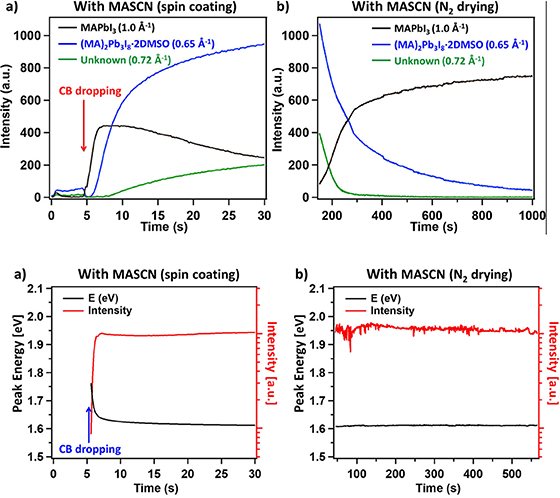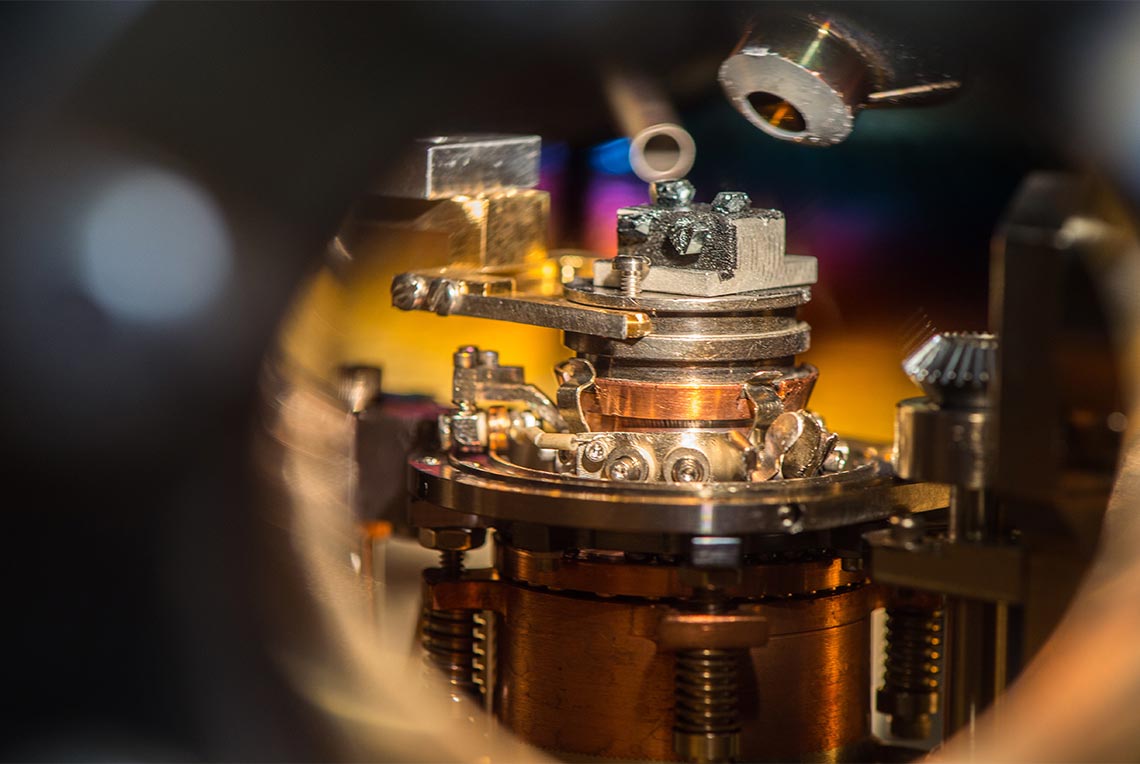Mechanism of Additive-Assisted, Room-Temperature Processing of Metal Halide Perovskite Thin Films
March 9, 2021
In this work, we used in-situ synchrotron grazing incidence wide-angle X-ray scattering and photoluminescence to elucidate the mechanism of improved film formation and crystallization kinetics. We found that, initially, films produced with MASCN (methylammonium and thiocyanate) show the formation of small MAPbI3 crystallites in addition to the (MA)2Pb3I82DMSO aggregate, along with an unidentified precursor phase.
Scientific Achievement
We have elucidated the role that thiocyanate additives play in improving the room-temperature crystallization of MAPbI3 thin films via in-situ synchrotron X-ray diffraction and photoluminescence measurements. The contributions of the MASCN additive are twofold: with the initial chlorobenzene antisolvent drop, solutions containing MASCN immediately form precursor aggregates and small MAPbI3 crystallites. During subsequent drying with N2, MASCN facilitates the dissociation of precursor aggregates and promotes growth of MAPbI3 crystallites into micron-scale grains.
Significance and Impact
Thiocyanate additives to perovskite precursor solutions allow for roll-to-roll processing of high-quality perovskite thin-film solar panels, because thiocyanate additives eliminate the need for a thermal annealing step. Our work elucidates the role of MASCN in the crystallization kinetics, which can guide development of additional methods for enhanced control of perovskite formation.
Research Details
- In-situ GIWAXS shows formation and growth/disappearance of MAPbI3 and precursor phases with MASCN additive. Slower crystallization kinetics are observed for films with no MASCN additive.
- In-situ photoluminescence of MASCN-additive film formation shows an initial higher energy peak, which redshifts overtime, indicating MAPbI3 forms as nanocrystals which grow larger over time.
Related People
Volker Blum
Duke University
David Mitzi
Duke University
Michael Toney
University of Colorado










